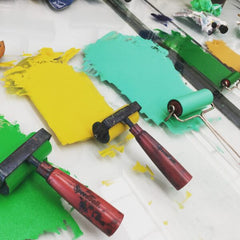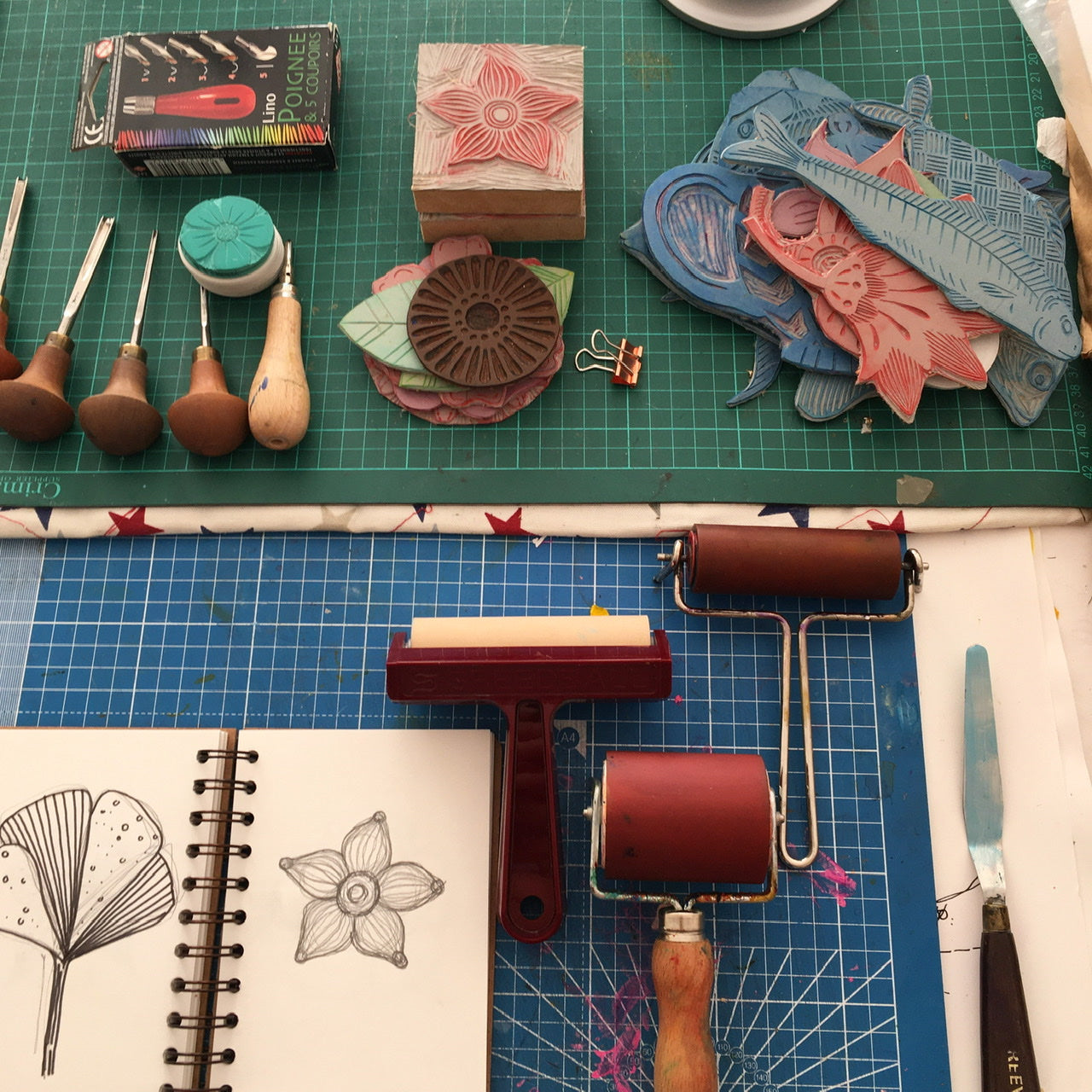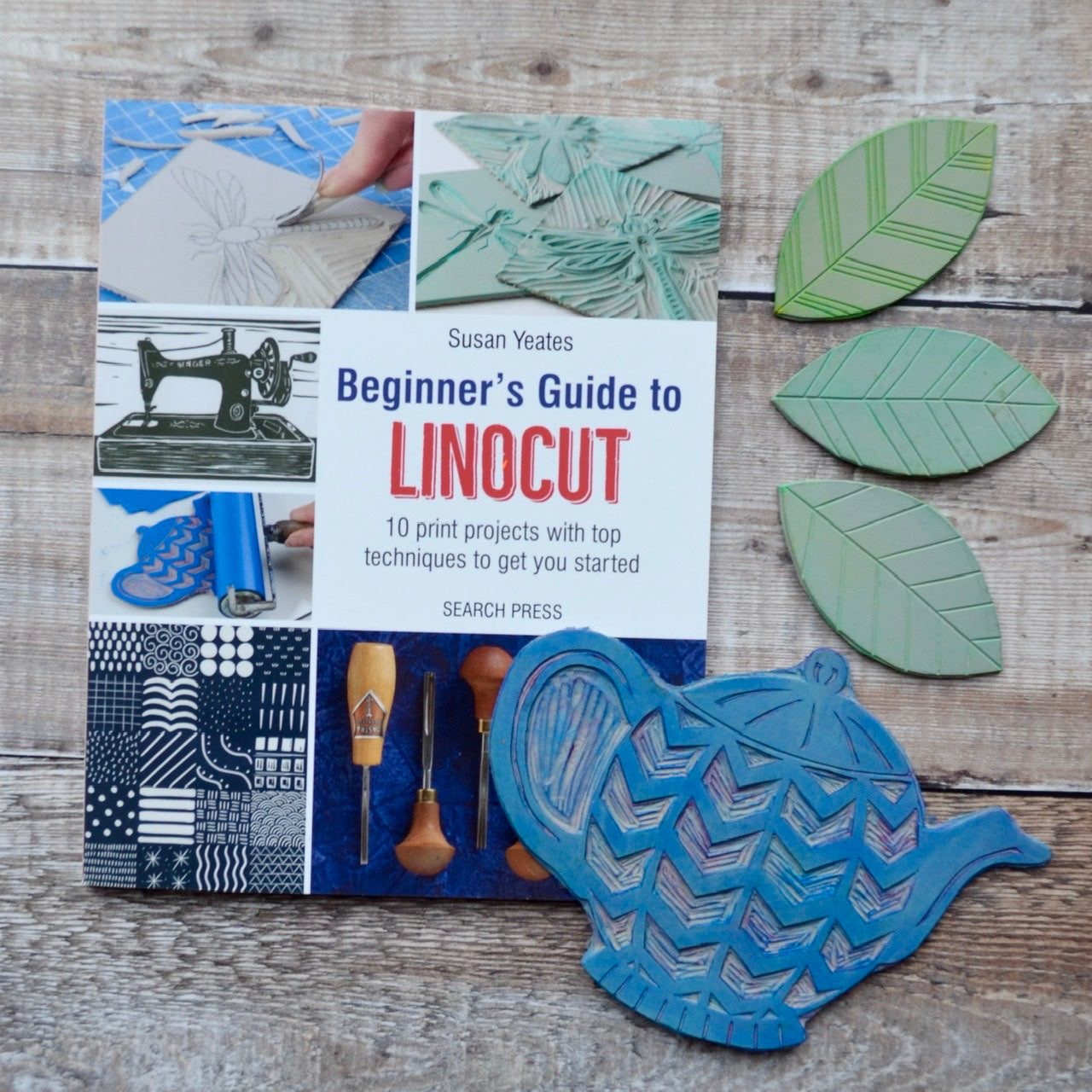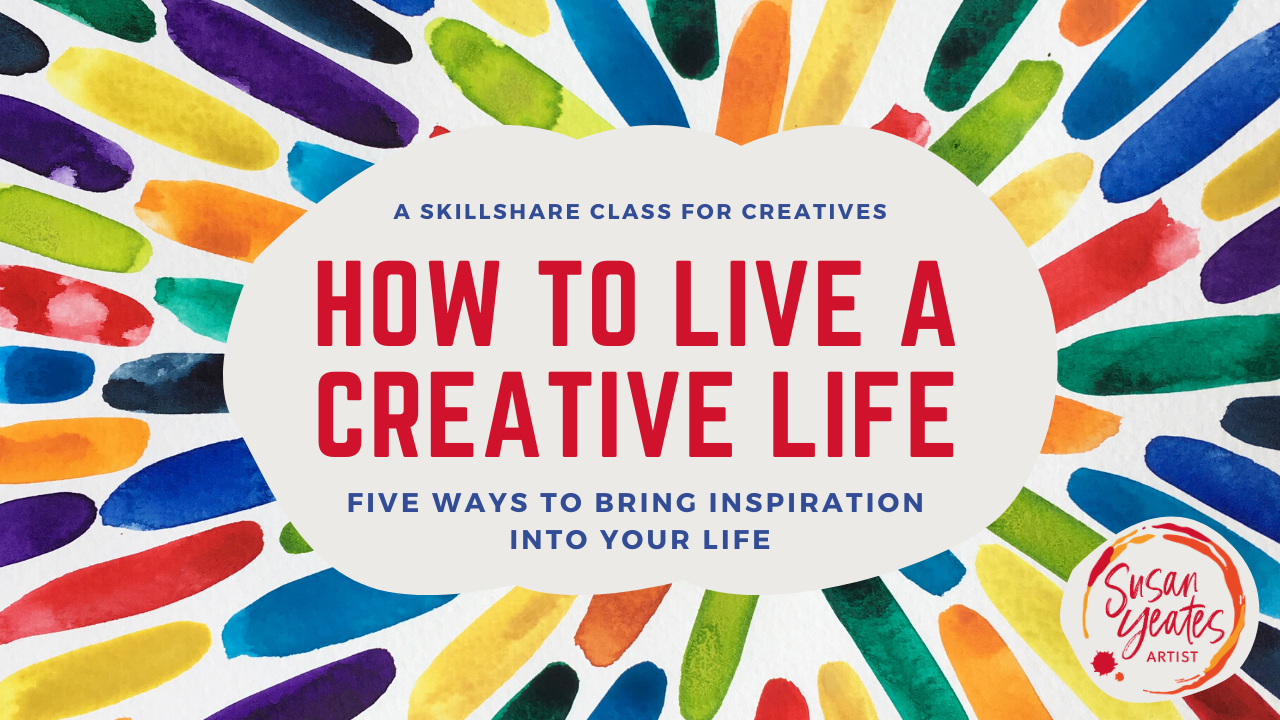
As an author of two books on linocutting (Learning Linocut and Beginner's Guide to Linocut), I get asked a lot about what tools are recommended for starting out with linocut. It is a great question as there are so many different types of cutters, brands of lino and varieties of printing ink. It can be be hard to know where to start, especially if you are just testing it out and seeing whether you like the process.
So here in this blog article I thought I would share with you a beginners list of all the things you will need to get started. Think of this as a starter kit or essentials pack that will get you going with very little cost so that you can see whether linocut is for you. At the bottom of the blog I will also share a link to my two FREE downloadable PDFs on linocut, which give a little more detail and advice on the basic linocut process and also a more detailed tools list. Oh, and of course don’t forget to check out my beginners Linocut course called Learning Linocut which can be found both on Skillshare and on my own website.
Linocut starter list

I think the simplest thing of all is to provide a list of the tools and materials you will need and then I will breakdown in a little more detail where to start:
- Lino
- Paper
- Printing ink
- Roller
- Linocutters
- Surface to print on
- Wooden spoon or tool for burnishing (or printing press)
- A sketch or design to work from
- Pen or pencil
- Tracing paper and carbon paper (optional)
Lino
When it comes to lino I like the traditional battleship grey lino. It is soft to work with and provides a high quality finish. I would recommend starting with small pieces, such as A6 (10x15cm Or 4”x6”) so that it isn’t too large a piece to finish.
There are also softer alternatives to lino such as Japanese vinyl (that looks green on one side and blue on the other), Softcut and Speedycarve. These are all great alternatives to lino that can be helpful if you find lino a little hard to work with or have any problems with your hands or wrists and need a softer surface.
Printing ink

When searching for ink I would look for ‘relief printing ink’ and to start with just a single tube of black will get you going. Water based inks are the easiest to clean up and dry quickly. I personally use Caligo Safewash inks that are washable with water but have an oil-based finish.
You can of course with time explore with buying coloured inks and a good place to begin would be using primary colours (red, green and blue), plus black and white so that you can mix a full range of colours. Process colours are also a good choice (black, cyan, magenta and yellow) if you are looking for just a small selection of inks.
Paper
Keep it simple when it comes to paper when you start out. You need a smooth white paper that will absorb the ink. When I am teaching beginner Linocut workshops I tend to select cartridge paper of a medium weight such as 80-100gsm. You can of course spend lots on very expensive and beautiful papers but in this practice stage, cartridge paper in loose leaf or torn from a sketchbook will do the job nicely!
Linocutters

An essential tool for linocutting, I would recommend that when you start out you look for a simple cutting set. This will include a handle and a number of replaceable cutting blades (U-shaped and V-shaped). This will cost around £5-7. It will also give you the ability to see what type of cutters you use and like the most.
I personally use the Pheil tools that have a fixed blade that you sharpen. I have around four that I use all the time in my favourite size of blades. These are a slightly larger investment per item of around £15-£20 each.
Roller

When printing linocut you need a roller that is just a little bit larger than the smallest side of your piece of lino. Look for a roller specifically for printing Linocut that has a hard rubber surface. A student grade roller will be fine. Rollers will last a long time if you look after them so you can always add to your collection if you start to work larger in the future.
Other materials
The other tools and materials you need probably don’t need too much explanation. A pen or pencil to draw your design (or tracing and carbon paper if you are transferring a sketch) are useful. You will also need a wooden spoon or something similar for rubbing the back of the print to transfer the ink.
And that’s all you need!
So apart from a few ideas and a little creativity, that is all you need to get linocutting. You may well find that some suppliers provide Linocut starter kits with all the specialist tools I mention above but buying them separately can work well too.
Where to buy?
Here in the UK I use the following suppliers for linocutting tools and materials:
These are by no means the only suppliers and I am not affiliated with any company in any way.
FREE info guides
Don’t forget that you can download my free PDF guides all about linocut. The first is a step-by-step guide to making a simple one colour linocut and them other is a more detailed tools and materials list.
Online Course – Learning Linocut
if you are looking to get started in linocut then I have a handy beginners course called Learning Linocut, teaching you the basics of linocut printing.

This course is available through my course portal here.
PLUS from August 2020 this course has also been uploaded to Skillshare for all students on this wonderful platform to enjoy as well. You can access it here.
Learning Linocut – Course Information

This online course is a complete guide to creating single-colour linocut prints. Study alongside Susan, Amazon no.1 bestselling author of Learning Linocut and Beginners Guide to Linocut as she demonstrates in easy-to-understand videos exactly how to prepare an image, cut the block, ink it up and finally print. Within no time at all you will know exactly how to create professional looking prints!
Check out the course on Skillshare here.
Enjoy Linocutting!
Thank you for reading and I hope this helps you to get started with linocut.
Enjoy it.
Susan





